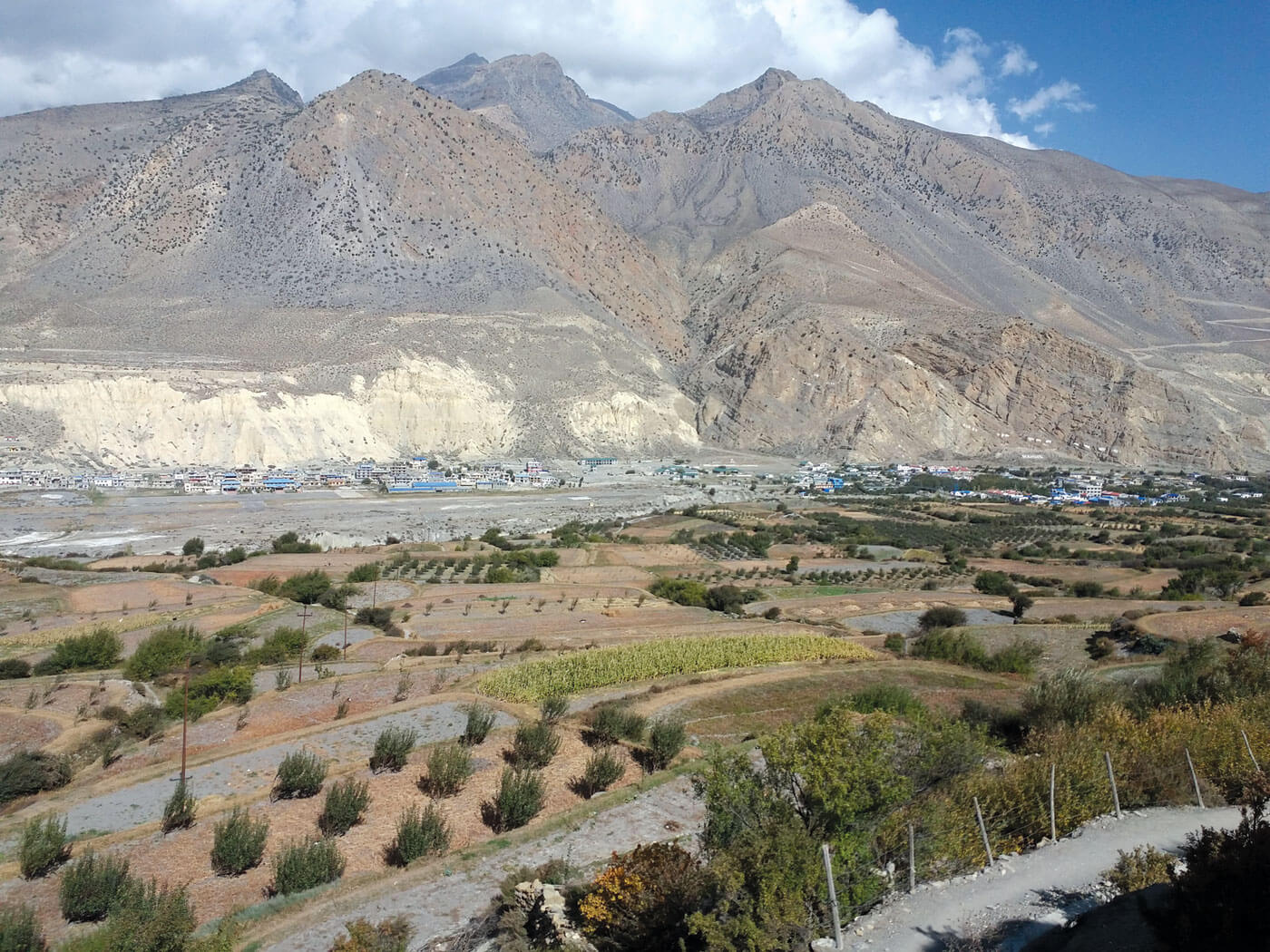Lift restrictions on Upper Mustang
The hefty permit and fees for foreign tourists visiting Upper Mustang are obsolete and outdatedLocal residents of Mustang, including a sitting MP and several politicians, submitted a petition to Prime Minister KP Oli in Kathmandu this week urging the government to lift the region’s ‘restricted’ status.
This is not the first time such a demand has been raised, and as infrastructure the region’s accessibility improved over the years, calls to remove the long-standing restriction have grown louder.
Upper Mustang is no longer weeks away from Kathmandu. Nearly 85% of the road from Beni to Kagbeni has been blacktopped, and one can drive from Kathmandu to Lo Manthang with an overnight stop in Pokhara.
Between April 2024 and April 2025, Lower Mustang received 144,745 international tourists, a near 50% increase compared to the previous year. Most of these were Indian pilgrims travelling to Muktinath.
Mustang is also gaining popularity among Nepali visitors, with 700,000 visiting the region in 2024.
A hotel operator in Kagbeni estimated that about 20% of Nepali visitors to Muktinath also travel to Korala, the trade and transit checkpoint on the China border. That would mean that nearly 100,000 domestic tourists visit Upper Mustang annually.
In stark contrast, international tourist numbers to Upper Mustang (north of Kagbeni) have remained stagnant, hovering around 4,000 visitors per year. The primary reason is the continued enforcement of the region’s restricted status. Foreign visitors must pay a steep permit fee: a minimum of $500 for 10 days, with an additional $50 per day thereafter.
Tourism some entrepreneurs, politicians, and residents want these fees to be abolished so Upper Mustang can attract a broader range of international travellers. The success of Lower Mustang, where relaxed restrictions have led to a tourism boom, is often cited as proof of what lifting restrictions could achieve.
Upper Mustang is not the only region in Nepal with a restricted status. Several northern areas prefixed with ‘Upper’ (Upper Manaslu, Upper Dolpo, Upper Kanchenjunga, and Upper Arun) also need similar permits and fees. Although no clear official explanation exists, these areas were primarily restricted due to historical inaccessibility, ecological and cultural fragility and security concerns.
Read also: Call to scrap Upper Mustang tourist fee
In the 1960s and 1970s, these remote regions served as shelters for Khampa guerrilla fighters who launched cross border ambushes on the Chinese military across the border.
Though the Khampa have long gone, security concerns rooted in that era seem to persist. The government in Kathmandu is seemingly unaware of the changed political and security landscape. If concerns do remain, they are not made public.
One of the main reasons for maintaining the restricted designation is to limit visitor numbers. But with improved road access and services, as Upper Mustang has seen, this justification no longer holds. When Upper Mustang first opened to international tourists in 1992, it had no formal lodges or hotels, and it took four to five days of trekking from Jomsom to Lo Manthang.

Without a nechyang (a household with traditional friendship), it was difficult to find a place to stay or get a proper meal. Only a few elite households offered accommodation.
Today, there are now more than 80 lodges and hotels above Kagbeni, spread across nearly every village. Several upmarket hotels now struggle to stay afloat during the off-season, relying on low-spending domestic visitors to survive.
Lo Manthang, once a remote destination, is now just a few hours’ drive from Jomsom, easily reachable by lunchtime for early starters. Once the remaining road sections are blacktopped, travel time will be further reduced. Yet, the government still charges a flat $500 fee for a 10-day permit based on outdated assumptions from a bygone era.
There has been no serious review of the permit structure to align with current realities, nor any response to local aspirations to attract more international tourists and harness tourism for economic development.
Concerns about over tourism are valid. There is a risk that increasing visitor numbers could erode Upper Mustang’s cultural heritage, social fabric, and fragile natural environment, precisely the features that make it special. However, the region’s 33 years of tourism experience have been largely positive.

Tourism has contributed significantly to the restoration and preservation of religious and historical sites like the Thubchen and Jampa monasteries in Lo Manthang, the ongoing conversion of the old palace in Ghami into a premium hotel, and the rehabilitation of many monasteries and chortens.
These efforts, supported by international donors and heritage experts, demonstrate that tourism—when well managed—can be a powerful driver of conservation. The high permit fees have been somewhat effective in limiting international visitors, but they have no influence on the growing number of domestic tourists, particularly during the Dasain and Tihar holidays.
The most pressing need now is for all levels of government—federal, provincial, and local—to invest in managing tourist flows and maintaining tourist sites. These efforts are essential not only to enhance visitor experience but also to build long-term resilience and sustainability for the destination.
Read also: Greening Nepal’s tourism, Hanna Wells
Visitor numbers are central to any tourism development strategy that aims to balance economic, social, and environmental goals. Clinging to obsolete policies and concerns to justify Upper Mustang’s restricted status is not only unfair, it also suggests an undemocratic and discriminatory attitude toward a remote district.
Shailendra Thakali, PhD, is from Jomsom and is a freelance consultant on protected areas, tourism, conservation, and sustainable livelihoods.




